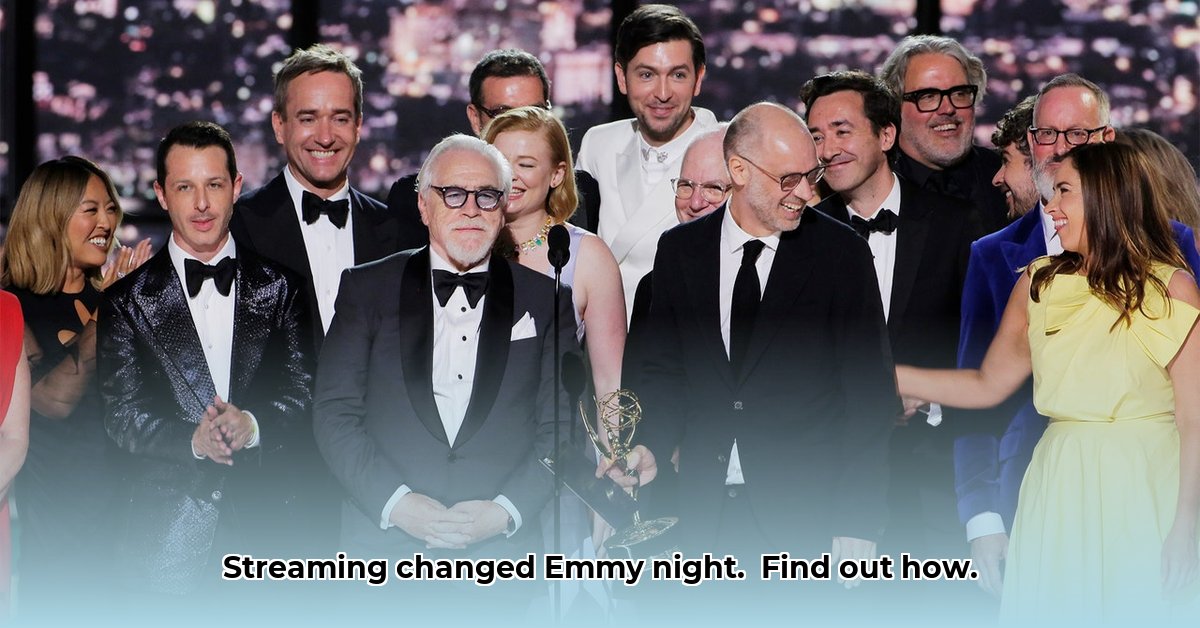
Eish, the Emmys! This year's ceremony wasn't just another awards show; it was a stark reflection of how streaming has turned the television world upside down. This isn't just about who took home the gold – we're exploring the Emmys' entire history, from its humble beginnings in Los Angeles to its current status as a global event. We'll unpack what makes a show an Emmy winner, the strategies producers employ, and how streaming has completely reshaped the nomination process. We'll also discuss the vital conversation around diversity and who gets to decide who's nominated. From the very first ceremony to the latest streaming sensations, we'll cover it all – the Emmys' incredible journey and its adaptation to the rapid changes in the television industry.
The Streaming Tsunami: Reshaping the Emmy Landscape
The Emmys, named after the "image orthicon tube" – a crucial component of early television technology – have always been intertwined with technological advancements. However, it's not just the gadgets; it's how we watch TV that's undergoing a dramatic transformation. The emergence of streaming services like Netflix, Amazon Prime, and Disney+ has created a tidal wave, a "streaming tsunami," reshaping the television landscape.
Remember the days when a handful of channels dominated, and everyone watched (roughly) the same shows simultaneously? Now, we're swamped with hundreds of channels, plus numerous streaming platforms, resulting in a vast increase in content and a fragmented audience. The Emmys have attempted to keep pace by tweaking award categories, acknowledging the increasingly blurred lines between daytime and primetime programming. But this clever strategy raises challenging questions. How do you fairly compare shows broadcast on vastly different platforms? How do you judge a small indie series against a big-budget blockbuster from a major streaming giant? This is fiercely debated.
The Emmys have also grappled with issues of fairness and representation. The ongoing debate surrounding gendered acting categories – separate awards for men and women – highlights that even this iconic awards show is still working on addressing long-standing inequalities within the industry. The Grammys' shift to gender-neutral categories underscores an area where the Emmys could improve. While efforts are underway, progress has been slow, and concerns remain. Then there's the question of regional representation: Are certain parts of the world, or specific types of stories, receiving less attention than others? These are critical issues demanding consistent action from the Emmy organisers.
Navigating the Future: Challenges and Opportunities
Looking ahead, the Emmys face significant hurdles. To remain relevant, they must continue adapting to the ever-changing media environment. Maintaining a focus on inclusivity and fairness is crucial for preserving their prestige. Striking a balance between the influence of traditional networks and the rise of numerous streaming platforms is a delicate balancing act requiring careful consideration and a willingness to embrace calculated risks. How can the Emmys ensure fairness in a world of increasingly diverse content? This is a question that demands attention.
Let's consider some pragmatic strategies:
Three Pivotal Points for Emmy's Future:
- Embrace inclusivity: Expand eligibility criteria to cover a wider range of platforms, formats, and content from diverse regions.
- Transparency is key: Enhance the transparency of the selection process, including judging criteria and nomination procedures, to address lingering concerns about bias and fairness.
- Adapt to the new media landscape: Continuously update the Emmy categories to encompass new forms of media and creative formats emerging in the streaming era.
Regional Representation and Equity: A Call to Action
The streaming revolution has undeniably reshaped the television landscape. But how has this affected the Emmys, and how can we improve regional representation and equity in this new era? The answer is complex. It requires a fresh approach to judging criteria, nomination processes, and even the definition of what constitutes exceptional television. How can the Emmys better reflect the diverse storytelling taking place globally? This question is vital to the awards' future.
Key Actions for Improvement
- Expanding Eligibility: Including content from a broader range of platforms, formats, and genres.
- Diversifying Judging Panels: Ensuring representation from various regions, backgrounds, and expertise across different media formats.
- Developing Clear Guidelines: Addressing the use of AI in content creation—a double-edged sword that presents both opportunities and ethical challenges.
In short, the Emmys are facing a monumental, ongoing challenge. Their future depends on their adaptability, creativity, and commitment to balancing the celebration of television excellence with addressing critical fairness concerns within the industry. It's a compelling journey to witness.